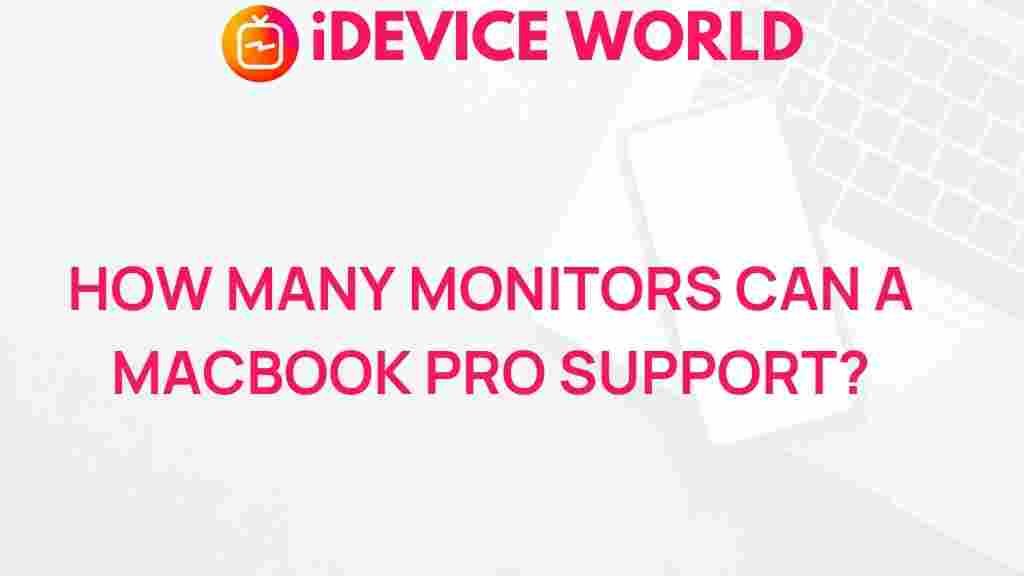Unlock the Potential: Discover the Maximum Number of Monitors a MacBook Pro Can Support
The MacBook Pro has become an essential tool for professionals and creatives alike, known for its robust performance and versatility. One of its standout features is the ability to connect multiple monitors, enhancing productivity and enabling a more immersive workspace. This article delves into the maximum number of monitors a MacBook Pro can support, offering valuable insights and tips for users looking to optimize their setup.
Understanding the MacBook Pro’s Capabilities
The MacBook Pro is equipped with powerful hardware and advanced technology, making it capable of supporting multiple external displays. However, the number of monitors you can connect depends on several factors, including:
- Model Year: Different MacBook Pro models have varying capabilities.
- Graphics Processing Unit (GPU): The type of GPU significantly impacts the number of displays supported.
- Connection Types: The ports available on your MacBook Pro (Thunderbolt, HDMI, etc.) play a critical role.
Step-by-Step Process to Connect Multiple Monitors
Connecting multiple monitors to your MacBook Pro can be done with relative ease. Follow these steps to maximize your setup:
Step 1: Check Your MacBook Pro Model
First, determine your MacBook Pro model and its specifications. You can do this by clicking the Apple icon in the top left corner of your screen, then selecting “About This Mac.” This will give you detailed information about your hardware.
Step 2: Determine the Supported Number of Displays
Here’s a quick overview of the maximum number of displays supported by various MacBook Pro models:
- MacBook Pro (2021 – M1 Pro, M1 Max): Up to 3 external displays.
- MacBook Pro (2020 – Intel): Up to 2 external displays.
- MacBook Pro (2019 and earlier): Typically supports 2-4 external displays, depending on the specific model and GPU.
Step 3: Gather Necessary Cables and Adapters
Depending on the monitors you intend to use, you may need different cables or adapters:
- Thunderbolt 3 (USB-C): Most recent models come with Thunderbolt 3 ports.
- HDMI: Ensure you have the right HDMI cables if your monitors support this connection.
- Adapters: You might need USB-C to HDMI or DisplayPort adapters for compatibility.
Step 4: Connect Your Monitors
Connect the monitors to your MacBook Pro using the appropriate cables and adapters. Make sure to power on the monitors.
Step 5: Configure Display Settings
Once connected, go to
This article is in the category Productivity and created by iDeciveWorld Team
